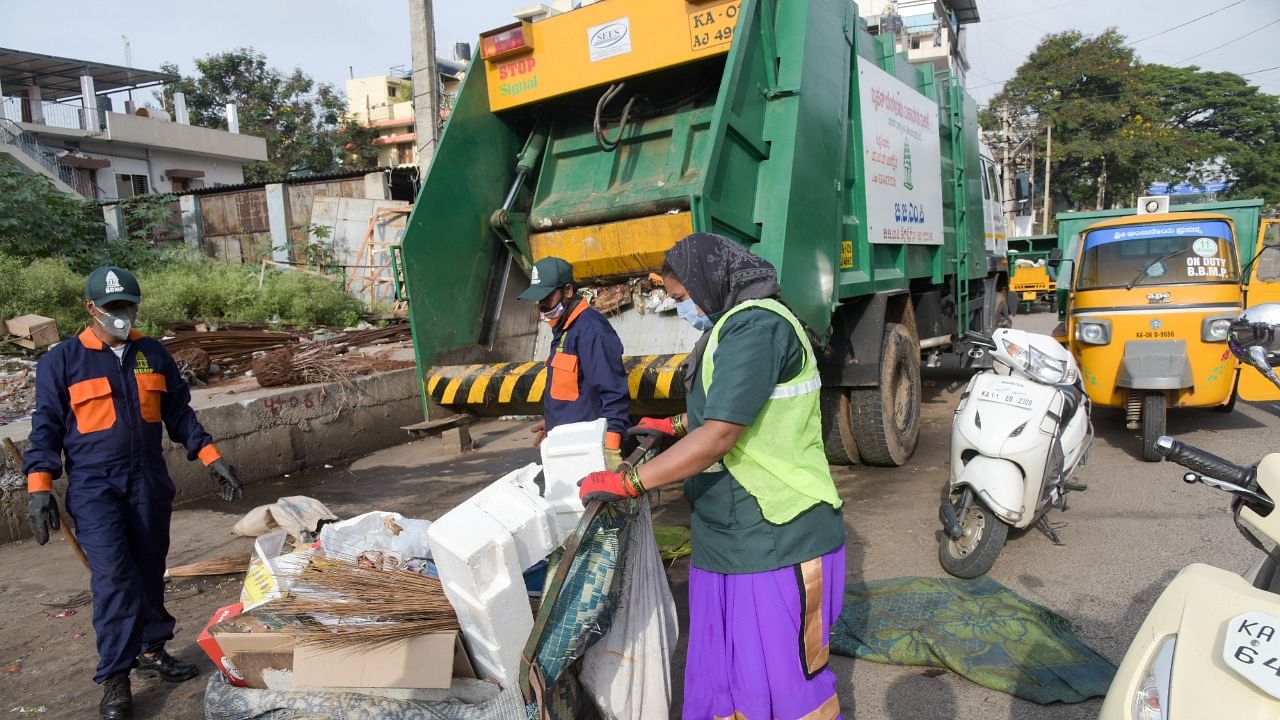
Last week, Deccan Herald and Prajavani held an interactive public discussion with senior officers of the Bruhath Bengaluru Mahanagara Palike (BBMP), domain experts, and a leader of the poura karmika association with citizens. As a moderator, I had a ringside view of different perspectives.
What did I learn from this discussion?
Waste Management in any city involves two broad categories of waste. Wet waste or liquid waste, which refers to sewage. Solid waste, is a broader term for garbage produced in households and commercial establishments. Solid waste comprises wet waste (vegetable peel, leftover food etc.) and dry waste (paper, wrappers, packing material etc.) Bengaluru generates a mammoth 2,600 tons of wet waste and 800 tons of dry waste daily!
The triad of solid waste management is Segregation, Collection, and Processing. While significant improvements have been made in all three areas, a lot more needs to be done urgently if Bengaluru were to become a sustainable city.
Segregation at source
Segregation refers to the act of separating dry and wet waste. Segregation is strictly enforced in many residential communities with innovative campaigns such as two bins and a bag. Most citizens are aware that source-level segregation is extremely important.
However, it came as a shock for me to learn that after all the awareness campaigns, penalties, etc., Bengaluru is still at a pathetic level of 40 per cent source segregation. This is a matter of deep concern and must ring alarm bells. There is no chance of scientific processing of waste if we mix waste.
Collection progress
The collection seems to be doing better than before thanks to the decentralised model for collection put in place where each ward is further subdivided into SWM blocks. Each block has 750 households, has a dedicated auto rickshaw that goes door to door.
In many areas, this model seems to be working very well; in some areas, notably Mahadevapura, with community leadership and close monitoring by ward committees, 100 per cent door-to-door collection is achieved and even source-level segregation is quite high, thanks to the WhatsApp groups that keep neighbours honest.
Processing challenges
Processing too has been improved, though it is the toughest challenge of all. Closing down the landfill sites at Mavallipura and Mandur after years of protests and court cases is a landmark event indeed, though more needs to be done to remediate the sites.
The obvious solution is smaller waste processing units at the ward level, but the BBMP finds citizens opposing such units in their locality. We made good progress with 164 dry waste collection centers (DWCCs) though there are issues with delays with payments. The webinar had a headline moment when BBMP said they want to make Bengaluru landfill-free in two years.
What next?
On segregation, the onus is clearly on citizens. We cannot expect any government to magically fix problems if we don’t play our part. Cities such as Mysuru have shown the way on how to get citizens on the agenda to achieve 100 per cent source segregation. BBMP must step up communication by roping in celebrities. There are complaints that though many people segregate waste diligently at source, the contractors mix them up to maximize billing.
The collection is about taking care of pourakarmikas and process efficiencies. The collection involves paying the sanitary workers on time. Direct payments seem to be working well after years of trouble, BBMP must be commended for streamlining this. However, many issues persist in creating a safe and dignified work environment for thousands of our front-line warriors that played a key role in fighting the pandemic.
Our door-to-door collection model seems to assume that someone is always at home but this is not always the case. The presence of stray dogs does not allow for waste bins to be left on the street. Ward committees must oversee the SWM blocks and involve citizens in every street and enlist resident associations as seen in Hagaduru ward, for example.
Considering 58 per cent of waste comes from commercial, BBMP should zero in this low-hanging fruit and ensure maximum compliance. In situ waste processing is not practical for everyone just like STP. The BBMP must offer different models.
Strong legislation
Finally, processing needs to be driven by strong legislation. In 2012, Lok Satta party proposed “Dumping Saaku” legislation which says “all garbage produced in a ward must be processed within the boundary of the ward”. Most of our wards are as big as a small town (50,000 to 1 lakh population!) and if there is political will, this can be achieved in two years with modern methods of composting and biogas plants.
The fact that a large chunk of the Rs 1,000 crore of solid waste management expense goes into transport, year after year, is a clear indication that we need to reduce how far waste travels. Just like cities cannot be dumped in villages, wards shouldn’t be allowed to dump their waste in neighbor wards!
The #CleanBengaluru webinar triggered many discussions in our city. What happens next, depends on both citizens and the BBMP acting with a great sense of pride.
(The author is Head, Citizen Participation, Janaagraha)
Watch the latest DH Videos here: